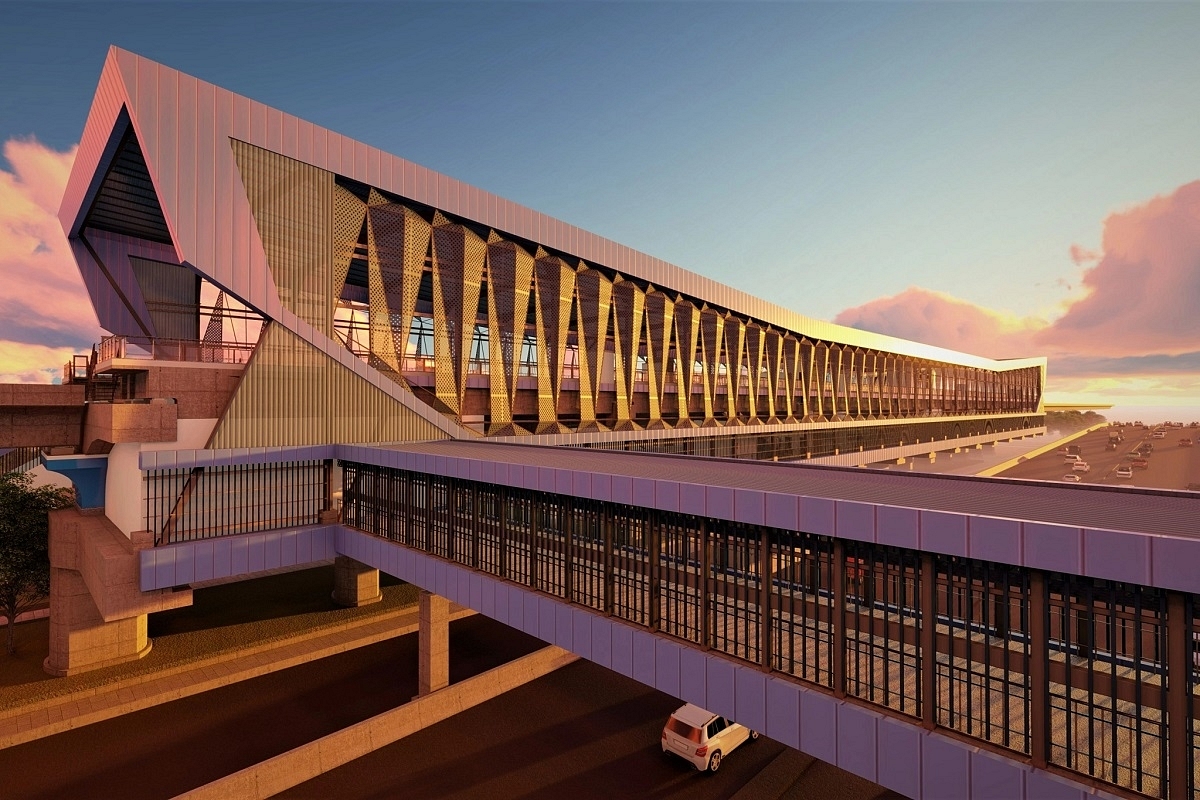News Brief
Delhi-Ghaziabad-Meerut Corridor: New Push To Make RRTS Stations Pedestrian-Friendly
- NCRTC set to facilitate commuters with easy and safe access to the RRTS stations.

An artist's impression of the project.
National Capital Region Transport Corporation (NCRTC) is making the 82-km long Delhi-Ghaziabad-Meerut corridor pedestrian-friendly.
It has planned and designed the entry/exit of the elevated stations of the corridor in such a way that the commuters along with the pedestrians will be able to use unpaid foot-over-bridges for easy access to stations and to cross the busy roads along the corridor.
Unlike other transit systems, these entry/exits will be accessible not just for Regional Rapid Transport System (RRTS) passengers but also for pedestrians who can use them to cross major roads without entering the paid area of the RRTS stations.
This feature will help in the safe movement of pedestrians and also help in crowd management at stations.
Commuter-centricity being the tenet of the implementation of RRTS, NCRTC is constructing the entry/exits of the elevated stations on the RRTS corridor on both sides of the roads.
This will not only enhance the accessibility for commuters intending to travel from RRTS but will also help passengers safely cross over busy roads such as the Link Road and the Delhi-Meerut Road.
Often due to a lack of proper cross-over, people jump over fences for a shortcut and cross roads in heavy traffic, risking their lives.
It also creates hindrances in the movement of traffic and a jam-like condition arises almost on a daily basis.
This has been a common practice around many public transport services over the years and NCRTC wanted to address it and present a solution even before the commencement of RRTS.
In Delhi, Sarai Kale Khan Station is located on Delhi’s busiest Outer Ring Road.
In Ghaziabad, the Sahibabad station is located over the busy Link Road connecting traffic to Delhi’s Anand Vihar, and other stations are located over the busy Delhi-Meerut Road, which is estimated to have a traffic volume of about 120,000 vehicles per day.
Meerut also has huge traffic in the city and the RRTS corridor is crossing the city from a densely populated area.
Out of the 25 stations being constructed over the 82 km long Delhi-Ghaziabad-Meerut corridor, 21 stations are elevated.
These elevated stations are being developed with entry/exit points on both sides so that the stations are accessible to passengers from either side of the road.
NCRTC is committed and working hard to facilitate commuters with easy and safe access to the RRTS.
The project will link the three cities of Delhi, Ghaziabad and Meerut with a high-speed train network with a design speed of 180 kmph.
The trial runs are expected to begin on the priority section of the corridor by the end of this year and it is expected to be operational by March 2023.
NCRTC is targeting to commission the entire corridor by 2025.
Introducing ElectionsHQ + 50 Ground Reports Project
The 2024 elections might seem easy to guess, but there are some important questions that shouldn't be missed.
Do freebies still sway voters? Do people prioritise infrastructure when voting? How will Punjab vote?
The answers to these questions provide great insights into where we, as a country, are headed in the years to come.
Swarajya is starting a project with an aim to do 50 solid ground stories and a smart commentary service on WhatsApp, a one-of-a-kind. We'd love your support during this election season.
Click below to contribute.
Latest